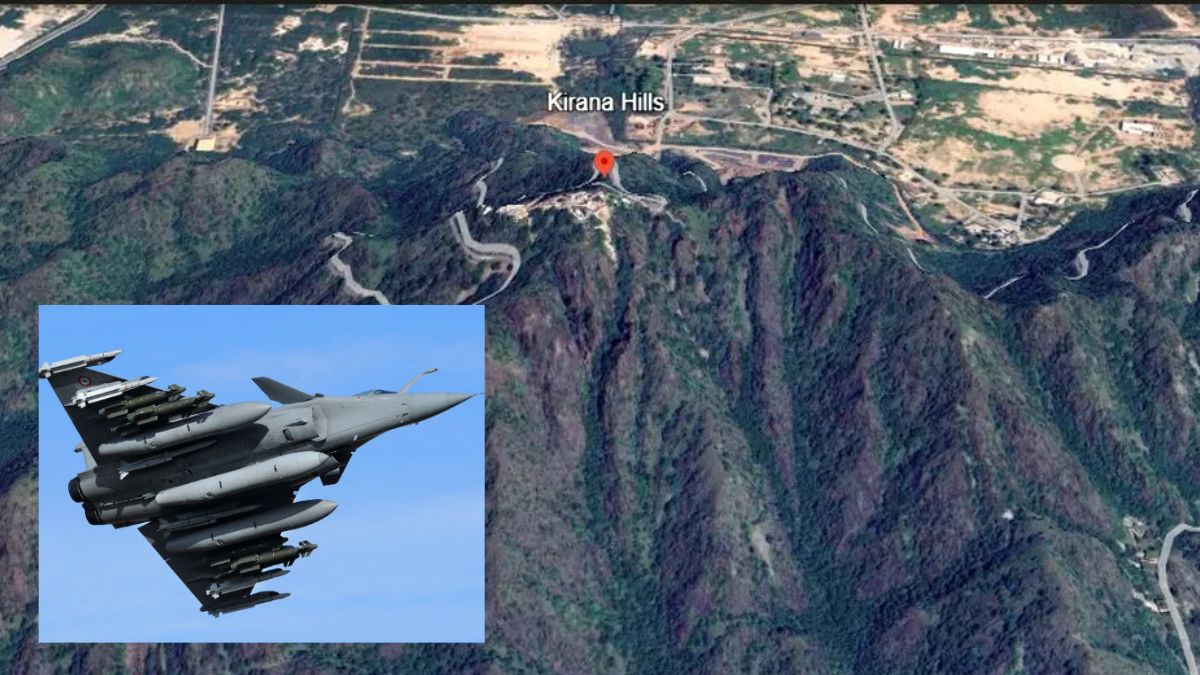From the moment India launched Operation Sindoor in response to the deadly Pahalgam attack, Pakistan’s Kirana Hills have come under intense focus. Numerous posts and videos have surfaced, claiming that India targeted the Sargodha region, specifically the Kirana Hills, resulting in a possible leak of radioactive substances. Some of these reports suggest that the U.S. deployed its nuclear emergency aircraft, B350 AMS, to assess potential radioactive activity in the area. They also claim that a U.S. team landed in Pakistan to investigate radiation levels in the Kirana Hills region. But are these claims true? Here’s a closer look at what lies within the Kirana Hills. However, denying hitting any nuclear storage facility in the Kirana Hills, Air Marshal AK Bharti said, “Thank you for telling us that Pakistan has stored its nuclear weapons at Kirana Hills, whatever is there. We have not hit Kirana Hills, whatever is there. I did not brief in my briefing yesterday.”
How Kirana Hills Ties Into Pakistan’s Nuclear Arsenal
Pakistan actively associated Kirana Hills with its nuclear program in the 1980s, as it worked on developing nuclear weapons mainly in response to India’s growing nuclear capabilities. During the 1980s and early 1990s, Dr. Abdul Qadeer Khan and his team conducted special nuclear tests there, known as “cold tests.” Years before the 1998 Chagai detonations brought Pakistan into the nuclear club. These are subcritical nuclear tests that do not cause an actual nuclear explosion but help scientists refine the design of nuclear warheads. These tests allowed Pakistan to advance its nuclear technology without the need for large underground test sites. The Bulletin of the Atomic Scientists confirmed in a 2023 report that Pakistan used Kirana Hills as a subcritical nuclear test site during that period.
Home To Pakistan’s Nuclear Arsenal?
Kirana’s remote and rugged location, far from any major population centres, made it an ideal place for secret nuclear research and testing. Pakistan’s military and intelligence agencies, including the ISI and military intelligence units, provided multiple layers of security to protect the site. This ensured that activities there remained hidden and secure from outside eyes.
Strategic Plans Division (SPD)
The Strategic Plans Division (SPD) was established shortly after Pakistan’s nuclear tests in 1998 and serves as the top agency responsible for the security, deployment, and survivability of Pakistan’s nuclear forces. Operating under the National Command Authority, chaired by the Prime Minister, the SPD manages nuclear doctrine, weapon development plans, and physical security measures to maintain Pakistan’s deterrence against evolving threats in South Asia.
According to various reports, its central hub at Noor Khan Airbase enables rapid decision-making and secure communications, making it a vital part of regional strategic stability. About 20 kilometres to the west, Mushaf Airbase hosts Pakistan’s F-16 fighter jets and serves as a forward base capable of delivering nuclear weapons in retaliation, making it a high-priority target during conflicts.
Satellite experts and open-source intelligence watchers continued to closely monitor the situation after reports emerged that India had used long-range cruise missiles like BrahMos and SCALP EG to strike multiple important targets inside Pakistan. Among these targets were Mushaf Airbase in Sargodha and Noor Khan Airbase in Rawalpindi, both located near Pakistan’s nuclear command and control centres. Noor Khan Airbase is especially significant because it is right next to the Strategic Plans Division headquarters, which is responsible for managing Pakistan’s nuclear weapons, their storage, and their readiness for deployment.
U.S. Beechcraft B350
Following the reported strikes, Observers spotted a specialised US aircraft, Beechcraft B350 “Aerial Measuring System” aircraft flying over Pakistan. It carries advanced sensors that can detect and map radioactive contamination in the air and on the ground with high precision.
Engineers have optimised the B350 AMS platform for low-altitude, low-speed flights, making it ideal for detailed contamination surveys following nuclear accidents or covert leaks. Critically, the aircraft is also capable of streaming live radiation data to remote command centres, enabling U.S. authorities to assess nuclear incidents globally with rapid responsiveness.
Additionally, Aviation tracking services spotted an Egyptian Air Force military transport plane, an Ilyushin IL-76, suddenly arriving and leaving Murree, Pakistan, just hours after the India-Pakistan ceasefire was announced. FlightRadar24 logs also indicated that the IL-76, operating under the callsign EGY1916, had previously departed from China and made a brief stopover in Bhurban Airstrip (Murree) before continuing on to the United Arab Emirates (UAE).
The Egyptian IL-76 aircraft followed a flight path and schedule that triggered speculation about its possible involvement in a confidential emergency aid operation, potentially transporting boron, a chemical compound widely used in nuclear radiation suppression protocols. Some OSINT communities also support this claim.
Pakistan’s Nuclear Hub
Various reports say that Pakistan started using Kirana Hills for its nuclear program around 1978 or 1979. The area was used for experiments before Pakistan carried out a nuclear explosion. According to a 2023 report by the Bulletin of the Atomic Scientists, Kirana Hills was used for subcritical nuclear tests from 1983 to 1990. These tests helped Pakistan develop its nuclear weapons. It is believed that the area has storage for weapons, garages for missile launchers, and at least 10 underground storage sites.
Before building its nuclear bomb, Pakistan carried out many experiments in the Kirana Hills. Some reports also say that Pakistan had hidden materials and equipment there to make nuclear weapons, but later removed them because of pressure from the United States.











